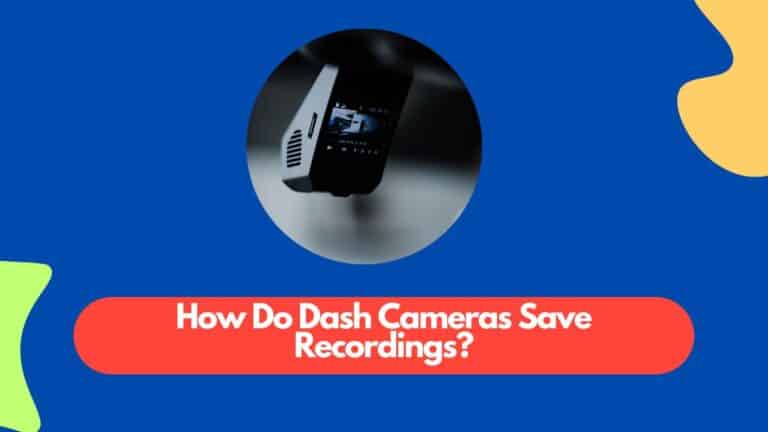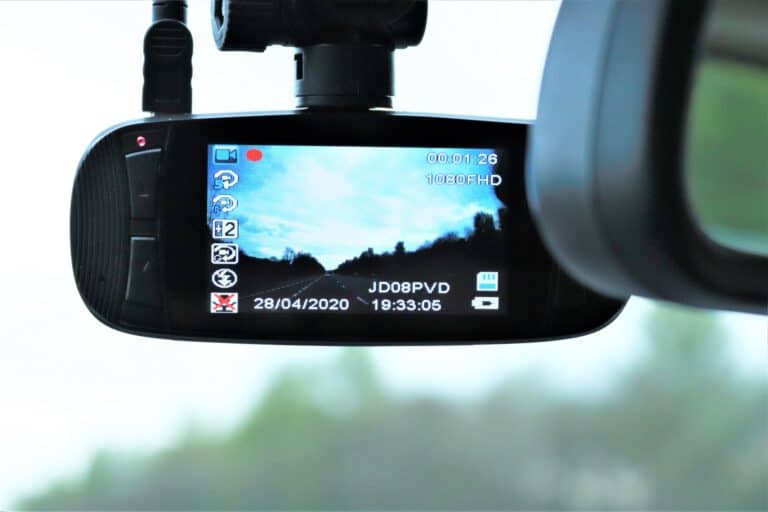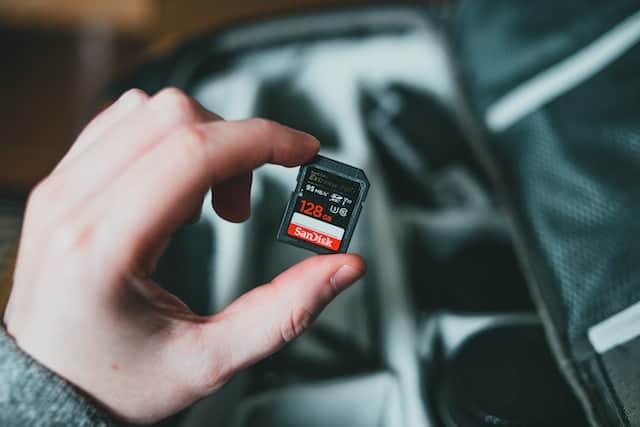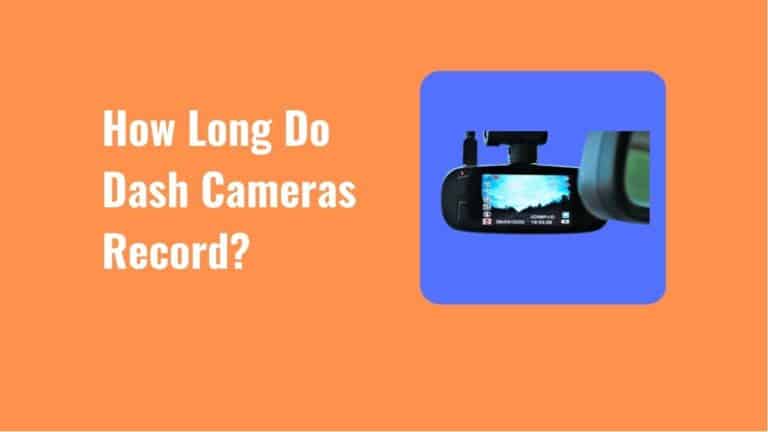How To Check Dash Cam Footage?
Are you curious about how to check dash cam footage? Whether you’re a new dash cam owner or someone looking to make the most of your device, learning how to access and review the recorded footage is essential.
In this article, we will guide you through the process step-by-step, ensuring that you can easily locate and review your dash cam footage whenever needed.
The first step in checking your dash cam footage is locating the memory card. Most dash cams store their recordings on a removable memory card, usually located on the side or back of the device. Once you’ve found it, gently remove the memory card from its slot by pressing down on it and sliding it out. Be careful not to force it or apply too much pressure, as this could damage both the card and the slot. Once removed, take note of any labels or indicators that indicate which side should be facing up when reinserting it later.
Now that you have successfully removed the memory card from your dash cam, it’s time to access the files on a computer. Inserting the memory card into an SD card reader or using a USB cable to connect your dash cam directly to your computer are two common methods for accessing these files. After connecting or inserting the memory card, open your computer’s file explorer and navigate to where it is displayed as a storage device. Double-click on it to open its contents and look for folders labeled with dates or times corresponding to when specific recordings were made.
By following these simple steps, you’ll be able to check dash cam footage in no time!
Locating the Memory Card
To locate the memory card, you’ll simply slide open the small compartment on your dash cam, revealing a tiny, rectangular treasure trove of captured moments. This memory card is where all the footage from your dash cam is stored, and it’s essential to know how to access it.
Most dash cams have a designated slot for the memory card, usually located on the side or bottom of the device. It may be labeled with an icon or indicator that resembles an SD card. Once you’ve located the compartment, gently push or slide it open to reveal the memory card inside. Be careful not to apply too much force as you don’t want to damage anything.
The memory card will typically be a micro SD card, which is commonly used in many electronic devices nowadays. It’s important to handle it with care and avoid touching its gold-colored connectors as they’re sensitive and can easily become damaged or dirty.
Now that you know how to locate the memory card in your dash cam, you’re one step closer to reviewing all those intriguing moments captured during your journeys on the road.
Removing and Inserting the Memory Card
First, make sure you’ve got the hang of removing and inserting the memory card properly. It’s a simple process that requires a bit of finesse.
To remove the memory card from your dash cam, locate the slot where it is inserted. Gently press down on the card until you hear a click, then carefully pull it out.
When inserting a new memory card, ensure that it is facing the right way – usually with the metal contacts facing down – and slide it into the slot until you feel resistance. Push gently until you hear another click, indicating that it is securely in place.
Read Also: What Size SD Card For Dash Cam Should You Choose?
Remember to handle the memory card with care to avoid any damage or data loss. By following these steps, you’ll be able to easily remove and insert your dash cam’s memory card whenever needed without any issues.
Accessing the Files on a Computer
Once you’ve mastered removing and inserting the memory card, accessing the files on your computer is a breeze.
- To begin, make sure your dash cam is powered off before removing the memory card from its slot.
- Next, locate the memory card adapter that came with your dash cam and insert the memory card into it.
- Then, connect the adapter to your computer using a USB cable.
- Once connected, your computer should recognize the device and display it as a removable storage device or external drive.
- Open File Explorer (Windows) or Finder (Mac), and navigate to the removable storage device or external drive where your dash cam footage is stored.
- From there, you can easily browse through the folders and files to find and view your dash cam footage.
It’s important to note that some dash cams may require specific software for playback or viewing of their footage on a computer, so check the user manual or manufacturer’s website for any additional instructions or software downloads.
With these simple steps, you’ll have no trouble accessing and reviewing your dash cam footage on your computer in no time!
Reviewing the Dash Cam Footage
Ready to dive into the exciting world of reviewing your captured adventures on your trusty dash cam?
Once you’ve accessed the files on your computer, it’s time to start reviewing the footage. Begin by selecting the video file you want to watch and double-clicking on it. The video will then open in a media player, allowing you to watch it in real-time or control the playback speed.
As you watch, take note of any significant events or incidents that occurred during your drive. If necessary, you can pause, rewind, or fast-forward through the footage to get a closer look at specific moments.
Don’t forget to utilize any additional features your dash cam may offer, such as GPS tracking or timestamp overlays, which can provide valuable context for analyzing the footage.
This process allows you to relive your experiences and gain insights into your driving habits or potential incidents on the road. So buckle up and get ready for an immersive journey through your dash cam footage!
Making the Most of Your Dash Cam
Get ready to maximize your experience with the incredible capabilities of your trusty dash cam!
There are several ways you can make the most out of your dash cam footage. First, make sure that your dash cam is properly positioned and angled for optimal viewing. This will ensure that it captures all the important details of your journey.
Additionally, be sure to regularly check and clear the memory card of your dash cam to avoid running out of storage space. It’s also a good idea to invest in a high-quality memory card with ample storage capacity, so you don’t have to worry about constantly deleting old footage.
When reviewing your dash cam footage, take note of any incidents or near-misses that may require further action, such as reporting them to law enforcement or insurance companies. You can also use your dash cam footage as evidence in case of accidents or disputes on the road.
Lastly, remember that while having a dash cam can provide valuable information and peace of mind, it’s essential to drive responsibly and follow traffic laws at all times.
Conclusion
In conclusion, it’s easy to check your dash cam footage. It can provide valuable information in the event of an accident or other incident on the road. By following these steps, you can easily access and review the footage recorded by your dash cam.
Firstly, locate the memory card in your dash cam. This may be located behind a small cover or panel on the device itself. Once you’ve found it, gently remove the memory card from its slot. Be sure to handle it carefully to avoid any damage.
Next, insert the memory card into a computer or laptop with a compatible memory card reader. Most modern computers have built-in readers, but if yours doesn’t, you can purchase an external reader at an affordable price. Once inserted, wait for your computer to recognize the device and open up the files.
Now that you’ve accessed the files on your computer, you can review the dash cam footage. The files will typically be organized by date and time, making it easy to find specific recordings. Simply click on a file to open it and use a media player program to watch or listen to the footage.
To make the most of your dash cam experience, consider regularly reviewing and organizing your footage. This will allow you to quickly find important moments when needed and ensure that there’s always enough space on your memory card for new recordings. Additionally, keeping backups of important footage is recommended in case of loss or damage to your original files.
Overall, knowing how to check dash cam footage is an essential part of owning one of these devices. By following these steps and taking advantage of all their features, you can ensure that you’re getting the most out of your dash cam and have peace of mind while driving on the road.







